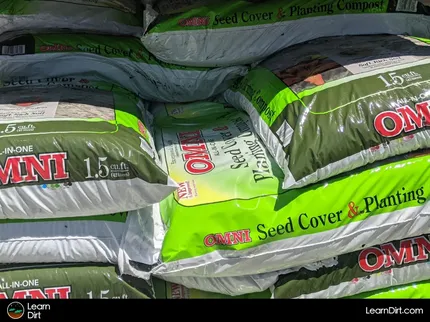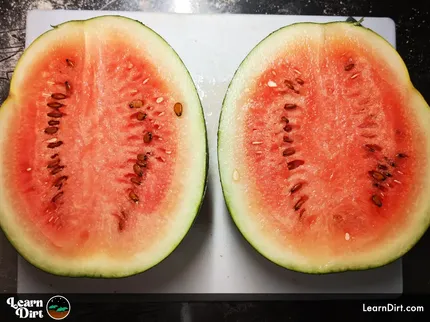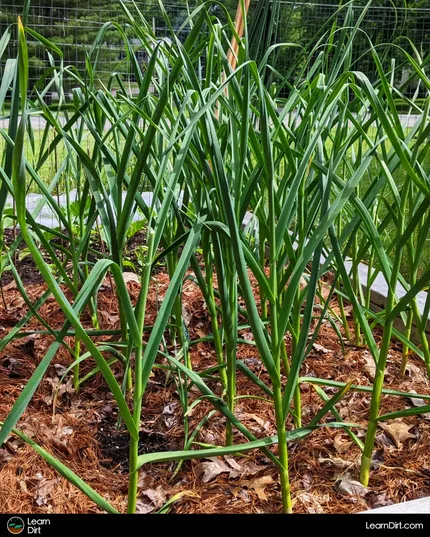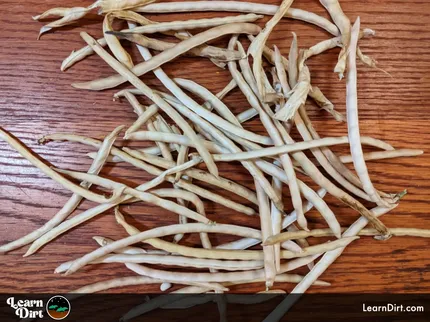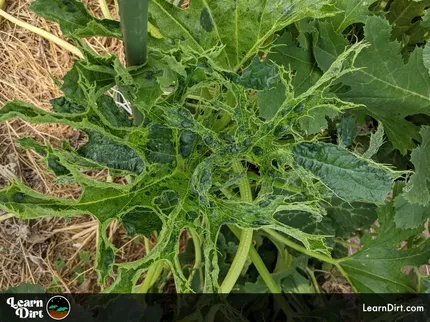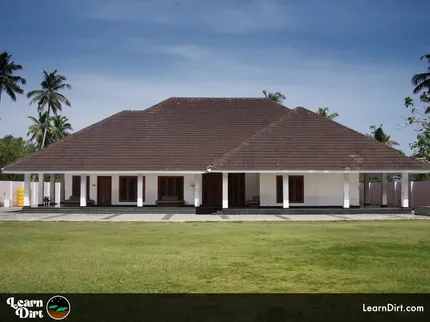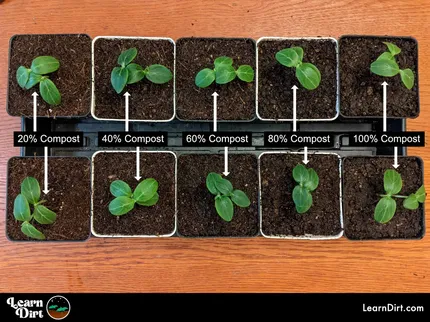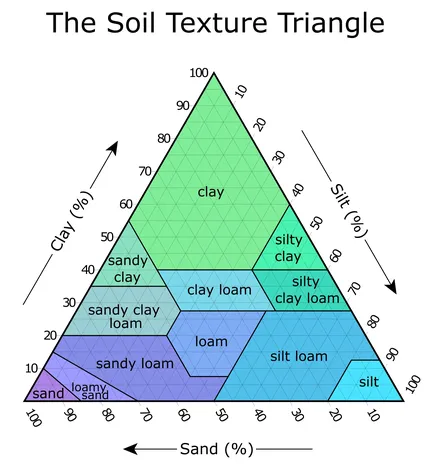Table of Contents
- Burying Plant Stems
- What Plants Can You Bury The Stem? (FULL LIST)
- Why Bury a Plant Stem?
- How to Bury a Plant Stem
- Risks of Burying Plant Stems
- Frequently Asked Questions About Burying Plant Stems
* Our articles never contain AI-generated slop *
Can you bury a plant stem? If you're wondering whether you can bury a plant when transplanting, or want to know which plants you can bury stems on - let's get into it!
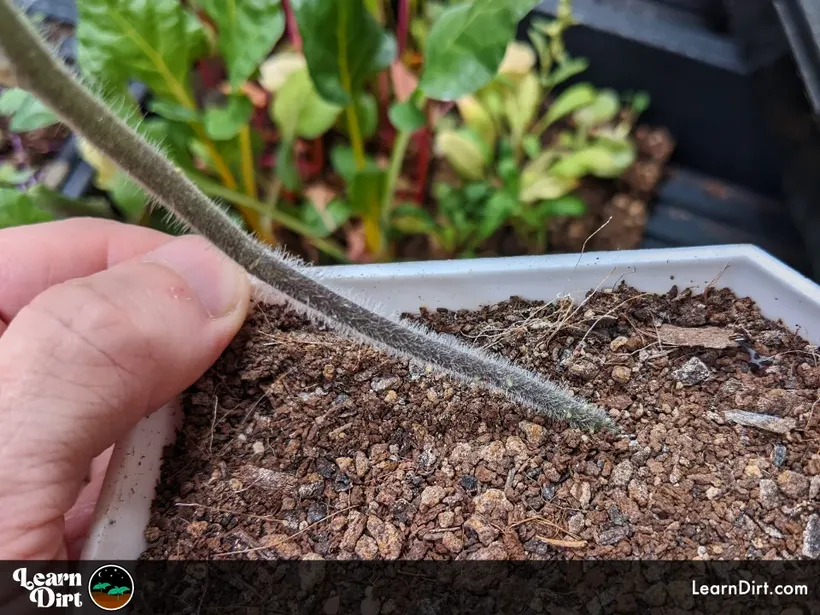
If this stem were buried deeper it would rapidly put out new roots up the stem to the soil level
Burying Plant Stems
Sometimes you'll see gardeners strip the shoots off the lower portion of a plant, such as tomatoes, prior to transplanting - and then lay that stem almost horizontally and cover it completely with soil.
They might also keep the plant vertical, but bury it below soil level and backfill so that more of the stem is covered than before.
Disclaimer: This post may contain affiliate links. Refer to the privacy policy for more information.
Other times, you'll hear gardeners say to always transplant certain species with an equal soil level, not backfilling any deeper than the plant was in its previous soil. The phrase "don't suffocate them" is frequently paired with this.
So which is it, bury plant stem or not? And why would I want to partially bury any of my plant stems anyway?
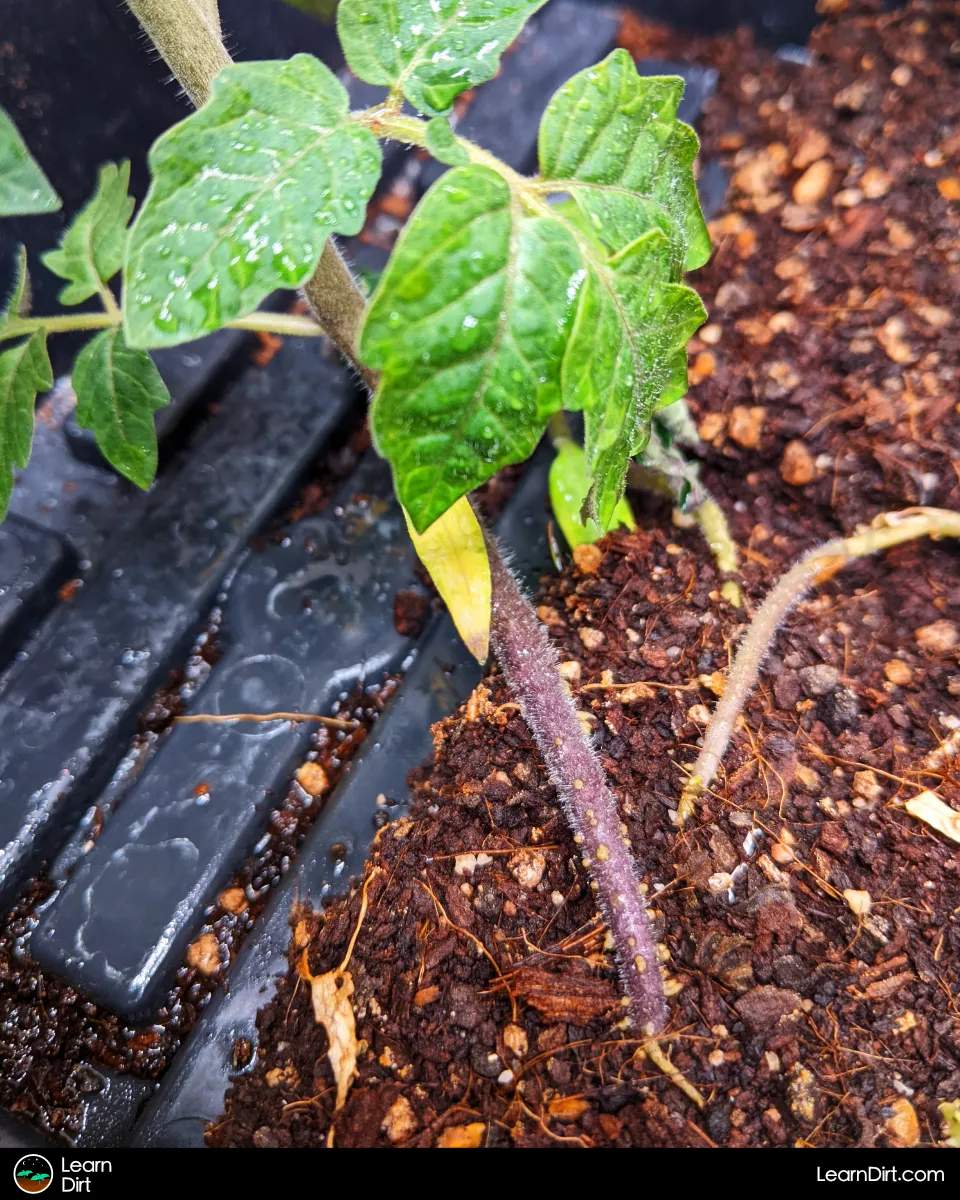
It depends on the plant. Most plants are not very good at spontaneously growing new roots from a buried stem, however some are exceptionally well-suited to put out new roots anywhere the stem touches the soil.
In these cases, by burying some of your stem deeper when you transplant, you encourage new root growth, which may in turn facilitate a larger plant and bigger yield in the long-run.
Knowing which plants tolerate stem burial can help you produce a larger yield in the long run.
We're gonna talk about the benefits and risks of burying plant stems here, and give you a comprehensive list of plants that can and will thrive with this technique.
Join The Grower's Community
A FREE, friendly forum
where you can ask questions,
swap tips, and meet like-minded growers 🌱
Check It Out!
What Plants Can You Bury The Stem? (FULL LIST)
- Any member of the nightshade family (Solanaceae):
- Any member of the cucurbit family (Cucurbitaceae):
- Cucurbita:
- Citrullus:
- Cucumis:
- Luffa
- Luffa (aka loofah)
- Momordica
- Bitter Melon
- Lagenaria:
- Calabash
- Cylanthera
- Caigua
- Basil
- Cannabis
- Lavendar
- Leeks (to blanche)
- Malabar Spinach
- Marigolds
- Some members of the Mint family (Lamiaceae)
- Sweet Potatoes
- Thyme
- Verbena
We're still adding to this lis, so you'll likely find numerous additional species which are capable to throwing out additional roots on a partially-buried stem.
Don't be afraid to try it and see if you don't mind losing the plant if it doesn't tolerate it.
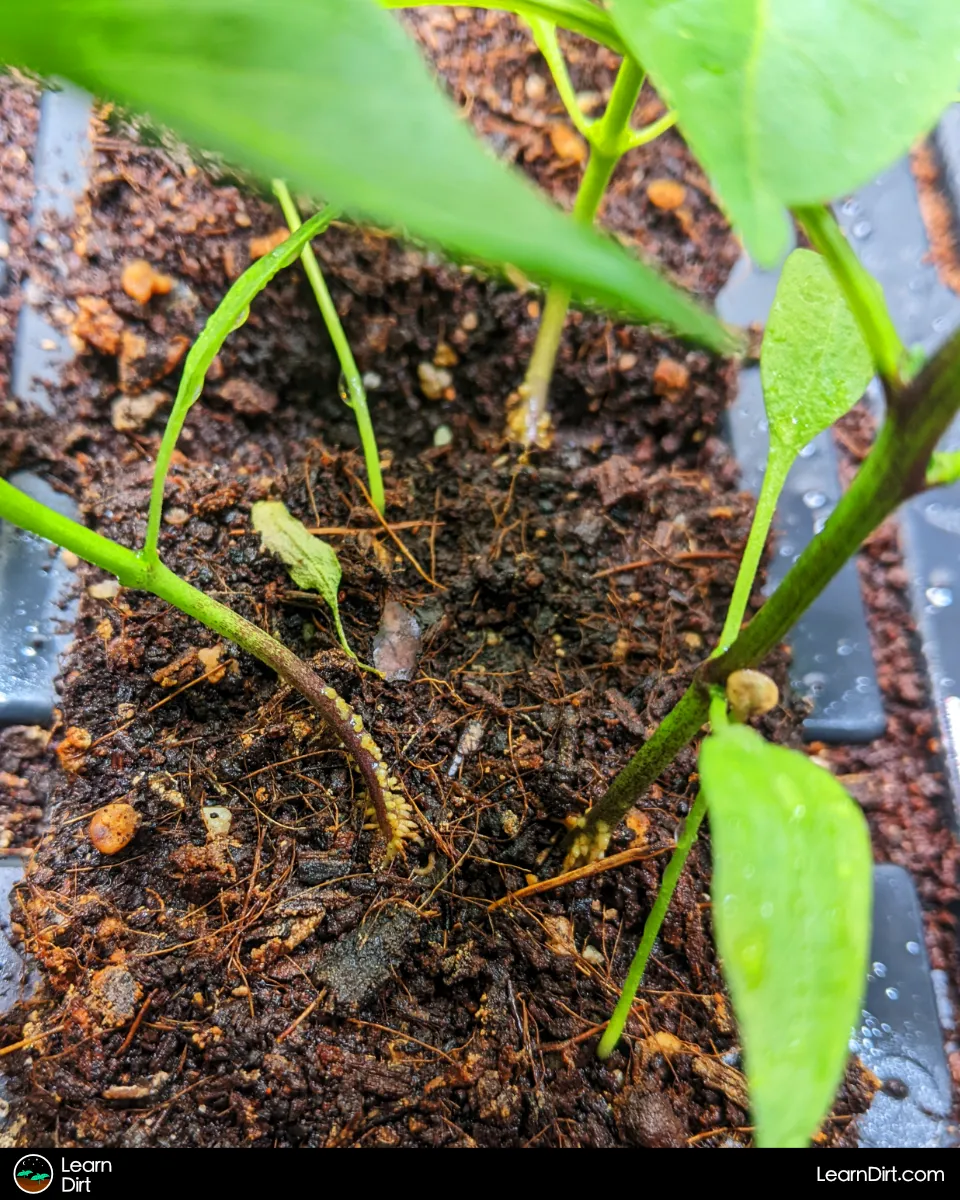
Still, a majority of plants do not tolerate this kind of treatment and will "suffocate" from being buried very deep - so I only suggest this on plants which your positive will tolerate it well.
Definitely don't bury your strawberry crowns, for instance!
Why Bury a Plant Stem?
The main reason for burying plant stems deeply is to encourage new root growth. This, in turn, can help the plant grow bigger and be more productive in the long run.
Some plants do really well with having their stems buried, and actively put new roots out wherever the stem touches moist soil. These notably include the nightshade (solanacea) family and the cucurbit (cucurbitaceae) family, among others.
Some plants really do not do well having their stems buried, so it's important to learn which plants can and cannot tolerate this technique.
Still others, like leeks, are sometimes buried deep purposely as a way to blanche their stems.
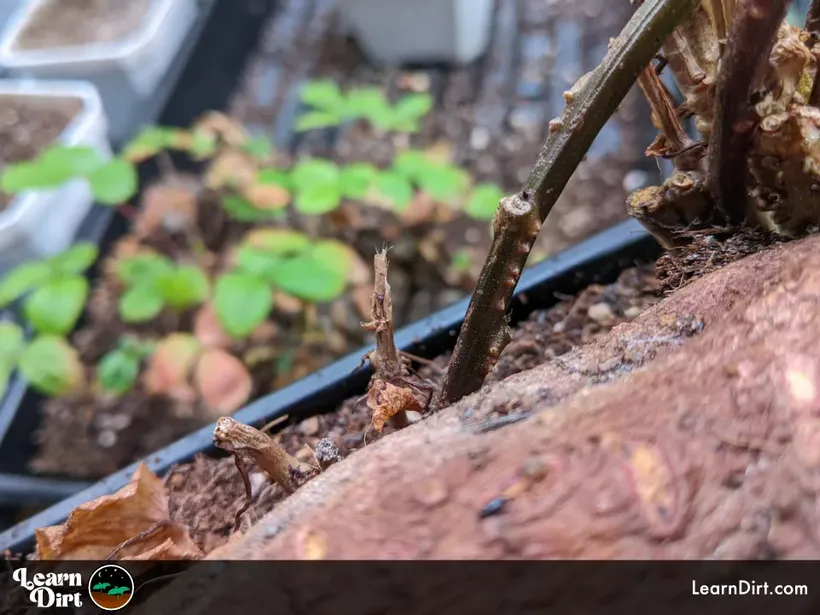
Above all, though, remember that gardening is all about experimentation and trial-and-error! Don't be afraid to try burying any plant deep and make your own empirical observations. This is the best way to learn.
If you have a few extra plants to spare, give stem burying a try side-by-side with an unburied control. Let us all know over on the forum what your results are, we'd love to hear about your experiments!
How to Bury a Plant Stem
There are two methods for burying a plant stem:
- Strip the Shoots
Before transplanting, strip the shoots off the lower portion of the plant's stem. Lay the stem almost horizontally and cover it completely with soil. This method encourages the plant to produce new roots from the buried stem.
- Bury the Stem Deeply
Bury the stem deeply and backfill the hole so that more of the stem is covered than before. This method encourages new root growth as well, but you'll need to be careful not to bury the stem too deeply.
Risks of Burying Plant Stems
Some plants really do NOT tolerate having their stems buried. Strawberries come to mind - where you make absolutely sure not bury their crowns.
If you decide to bury plant stems, ensure that you know which ones like to be buried. That, or recognize that you're heading into uncharted waters if you choose to experiment and wing it. That's the best way to learn, though!
Just know that some plants will absolutely "suffocate" from being buried too deep. This'll stunt growth at best, or kill the plant at worst. Refer to the list above if you're looking to avoid that sitch.
Frequently Asked Questions About Burying Plant Stems
You asked and we answered! Here are some of the most commonly-asked questions about burying specific plant stems:
Can You Bury Cucumber Stems?
You absolutely can and should bury cucumber stems when transplanting. Cucumber stems will quickly put out new roots wherever the stem is buried.
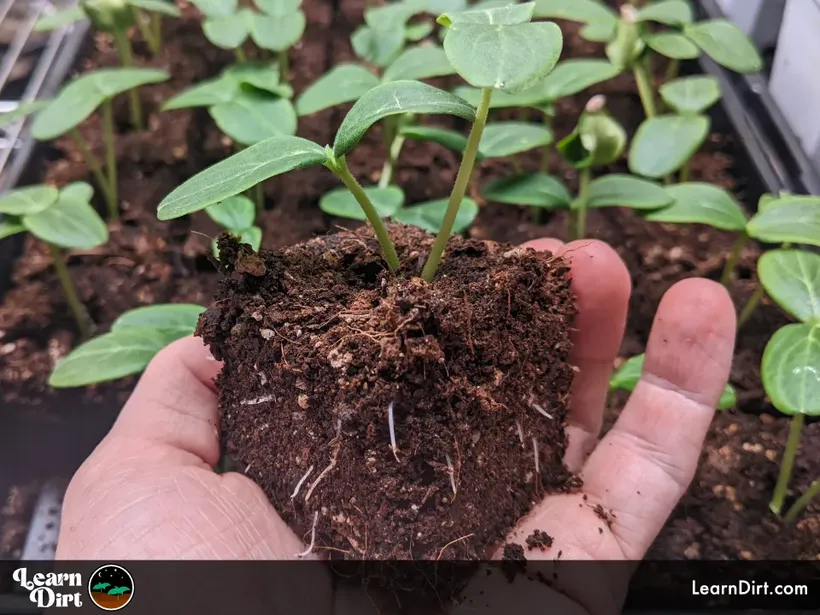
A stronger root system means more productive cucumbers with better yields, so bury your cucumber stems deep when transplanting like you might with tomatoes. This will help push them to grow a robust root system early, which sets them up for better health and production later in the season.
Much like investing in your soil gives you the foundation for great plant health and yields later, investing in your plant roots also sets you up for better results down the road.
Dig Cool Merch?
Burying plant stems deep is what tells plants to put more energy into roots now, to yield more fruit later.
Can You Bury Potato Stems?
A common technique for growing potatoes is known as 'mounding', whereby soil is piled up around the potato stem as it grows taller.
By constantly burying potato stems deeper and deeper in these mounds, you encourage more root development up the stem.
Because potatoes set their tubers on the ends of the roots, it's easy to see how increased root development leads to increased potato harvests. That makes potatoes one of the best candidates for burying stems!
Can You Bury Squash Stems?
Not only can you bury the stems on any type of squash, but also consider that this may deter dreaded squash vine borers.
A common nemesis that gardeners hate, the squash vine borer drills into the base of squash stems and saps the plant of all its strength, eventually killing it.
SVB's can drastically reduce squash yields or in some cases prevent any fruit from being produced at all.
Burying squash stems deeper can leave less stem exposed for them to target.
Can You Bury Watermelon Stems?
Because watermelon vines trail along the ground, they're one of the easiest plant stems to bury.
You don't need to do it while transplanting (especially since watermelons are commonly direct-sown), you can do it long after the plant is in the ground.
Dig a furrow next to the watermelon vine, strip any leaves, flowers, or fruits along a length of the stem, and nudge it into the furrow.
Cover with dirt, being sure to leave a few watermelon leaves unburied to gather sunlight.
The melon will root all along the stem, and after a few weeks of root growth you'll see a huge boost in leaf, flower, and fruit production. This is a great way to get larger melons and better yields!
Can You Bury Zucchini Stems?
Can You Bury Marigold Stems?
This one may seem unlikely, as it's not in the same family as any of the other plants you can bury.
That said, you can absolutely bury marigold stems when transplanting. Doing so will cause increased root production along the stem and yield bigger plants are more blooms!
Just like the other plants mentioned here, you should strip the lower leaves from your marigold before you transplant it deeper.
Burying stems is also a great solution for lanky marigolds, if they stretch too far when they're young due to low light. If you've got lanky marigolds that threaten to tip over, burying the stems deeply will help them stand up well. And of course, increase root production in the process. Win-win!
Can You Bury Eggplant Stems?
Just like tomatoes, peppers, and tomatillos, eggplants are also in the nightshade family (Solanaceae). As you might guess, all these commonly-cultivated nightshades will readily root from stems.
Bury eggplant stems deep when transplanting or if they stretch too much and get lanky as seedlings.
It may take longer for your eggplant to grow at first while it focuses on root production, but your reward will be a larger plant which ultimately produces more aubergines in the long-run.
Can You Bury Pepper Stems?
Can You Bury Tomatillo Stems?
Can You Bury Okra Stems?
Can You Bury Tomato Stems?
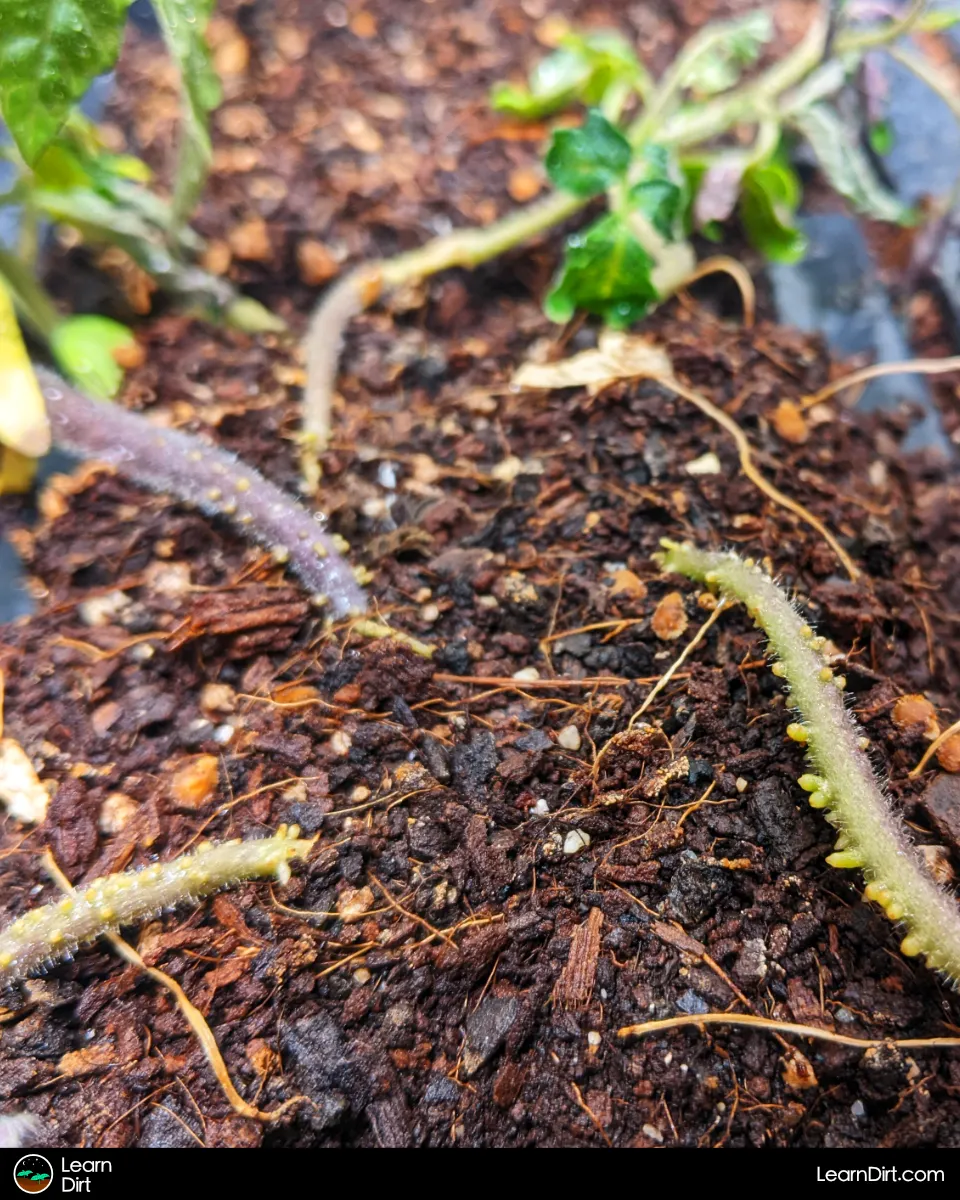
Can You Bury Broccoli Stems?
Can You Bury Bean Stems?
Can You Bury Basil Stems?
Can You Bury Pumpkin Stems?
Burying pumpkin stems is a technique often used by the folks who grow those enormous prize-winning thousand-pound pumpkins you could move your whole family into.
The secret 🤫 is to let the pumpkin vine grow a few feet long, then to strip it of most of its lateral leaves and any developing flowers or fruit, dig a trench next to it, and bury the whole thing - leaving just the end and a few leaves above ground.
This encourages an enormous amount of root growth along an extra 3ft, 4ft, or even 5ft+ of the stem. The plant will put on new leaves, trust in the process and be patient.
That huge increase in root development is what supports those monsters that take the ribbon at the county fair.
Try burying your pumpkin stems if you want less fruit but vastly larger sizes.
Have any plants I've missed on my list? I would love to hear about your experience burying plants deeper when transplanting and whether you found this to increase yield or whether you found it not to perform any better.
That's all for now, thanks for reading!
If you have any questions, comments, or would like to connect with fellow gardeners, head on over to the forum and post there.

![Black Dirt Live Again [Green]](/media/product_images/black-dirt-live-again-[green]_shirt_260x260.png)



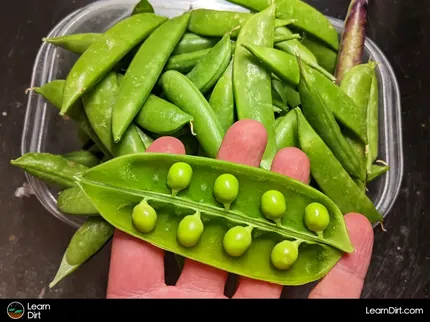
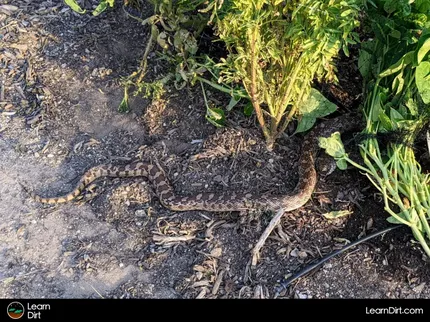
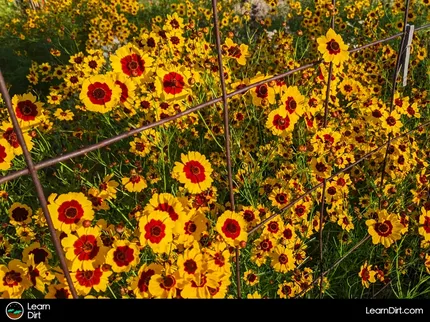
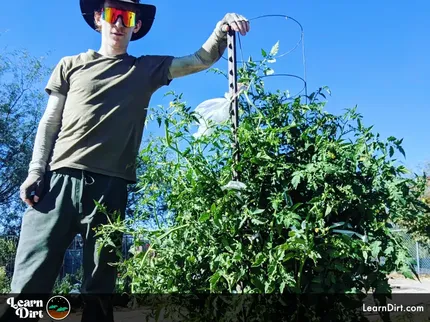

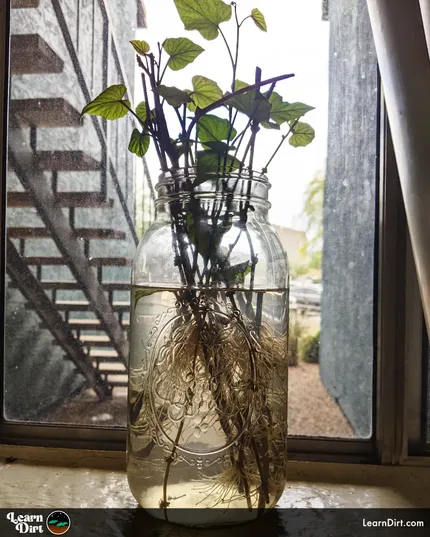
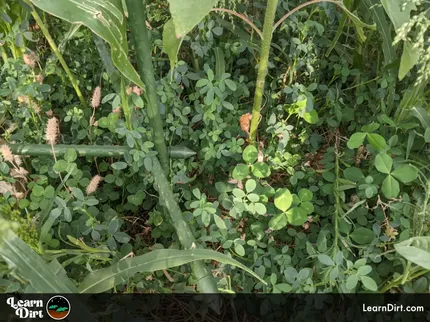
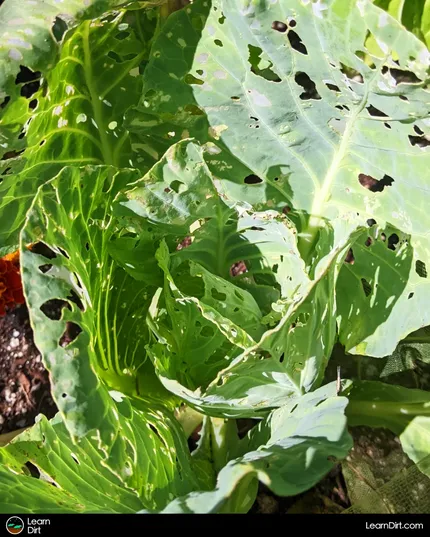
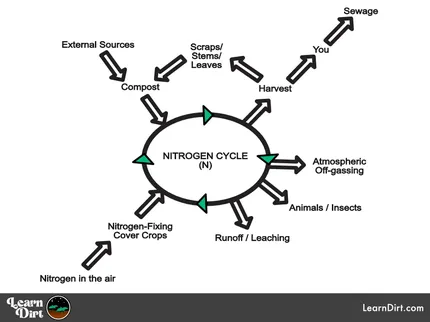
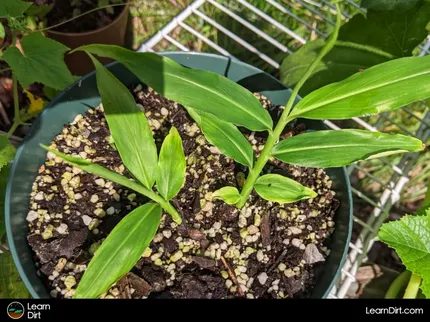


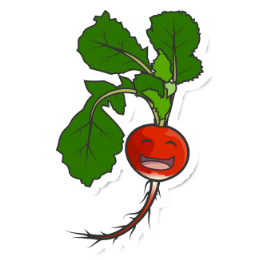
![Black Dirt Live Again [Blue] T-shirt](/media/product_images/black-dirt-live-again-[blue]_shirt_260x260.png)
